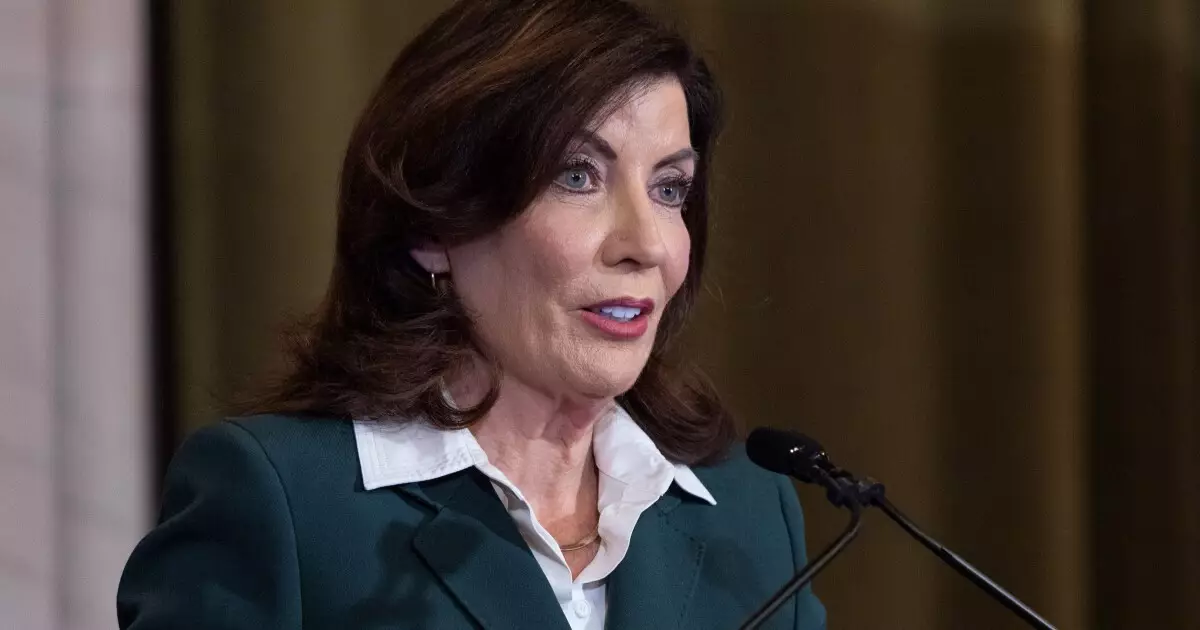The ambitious initiative of congestion pricing in New York City finds itself at a precarious juncture, as political dynamics shift with significant implications for the city’s transportation infrastructure. With the impending election of Donald Trump as President, voices like New York City Comptroller Brad Lander have expressed grave concerns. The looming threat of the program’s termination encapsulates a broader narrative where critical investments in public transit are jeopardized by fluctuating political winds. As stakeholders grapple with what that might mean for the Metropolitan Transportation Authority (MTA) and its capital plans, the stakes have never been higher.
Congestion pricing is designed to charge vehicles for driving in highly congested areas during peak hours, thus aiming to reduce traffic congestion while simultaneously generating vital revenue for public transit systems. Although the plan, which could bring an estimated $1 billion annually, has garnered support for its forward-thinking approach, it also faces substantial opposition—especially from communities in the suburbs who would bear the economic burden of increased tolls. The MTA considers congestion pricing a linchpin for its capital plan, but there are many hurdles to actual implementation.
In response to political uncertainty, recent developments indicate that New York Governor Kathy Hochul’s unexpected pause of the congestion pricing rollout raises questions about the administration’s commitment to public transit funding. Many observers suspect that the pause was orchestrated as a strategic move, potentially delaying implementation until after the election in hopes of a more favorable political climate.
As New York City’s transportation infrastructure ages and deteriorates, the consequences of delay become severe. Comptroller Lander highlighted the risks involved in halting congestion pricing, estimating a $15 billion loss in investment that could have strengthened mass transit. This financial shortfall positions the MTA in a precarious situation, as delaying toll implementation exacerbates an existing funding gap that stymies crucial repair projects and modernization efforts.
Currently, the MTA’s 2020-2024 capital plan is already grappling with a $16 billion void owing to the suspension of congestion pricing. Coupled with a disheartening $28.5 billion in uncommitted funds for future projects, the urgency to rectify these fiscal discrepancies cannot be overstated. With every passing day, the public’s reliance on an efficient transit system becomes increasingly critical, underscoring the urgent need for innovative solutions.
In the aftermath of the November elections, the political landscape remains pivotal. Hochul’s administration is reportedly considering adjustments to the toll structure, exploring options to decrease passenger vehicle tolls from $15 to $9 to win favor with a reluctant electorate. However, this maneuver may come at the expense of truck and taxi toll increases and the elimination of discounts for low-income drivers—a potential unraveling of equity in transit funding.
Moreover, the potential reinstatement of congestion pricing is contingent upon meeting a 60-day regulatory approval process and gaining crucial endorsements from federal officials. Statements from incoming President Trump proclaiming a desire to terminate the program altogether amplify existing uncertainties. The Federal Highway Administration’s role becomes integral to this political chess game, as any move to rescind approval could jeopardize the program’s future altogether.
With the complexities surrounding congestion pricing, New York faces formidable challenges, yet there remain paths toward viable solutions. The MTA asserts its readiness to deploy the program upon receiving authority, and optimism about potential legislative support lingers amid the landscape. However, successful navigation of this layered dilemma requires not only strategic foresight but also collaboration across party lines.
The stark reality is that unless decisive action is taken soon, the MTA’s ambitious plans for the future could be stymied indefinitely. As New York city residents aspire toward a sustainable and robust transportation network, the interplay of politics must harmonize with the urgent necessity for public infrastructure investment. The fate of congestion pricing serves as both a reflection of the city’s immediate needs and a barometer of how political changes can decisively impact essential social and economic frameworks.

